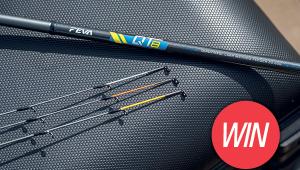Hard Pellet Masterclass
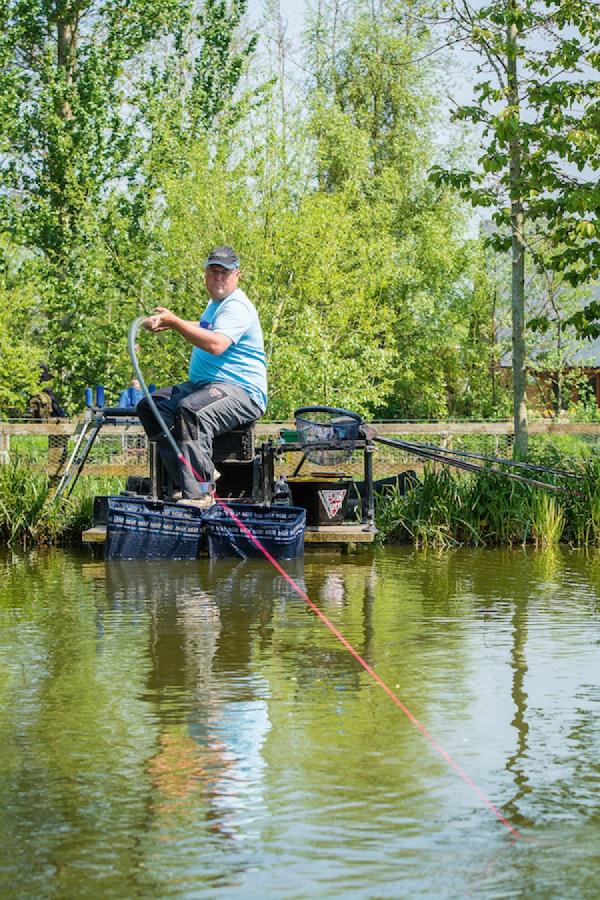
Get Pinging!
Jamie Hughes likes to keep in touch with the ever changing behaviour of fish. Here is why he thinks hard pellets are starting to rule over soft…
Pellets have always been the bait in which I have the most confidence. I have spent years perfecting the way that my bait is prepared and also the best ways of presenting the bait through my rigs. For a long time fishing with softened micros and a soft hook pellet/expander was the best way to approach most fisheries that I visited and at times is still a great method.
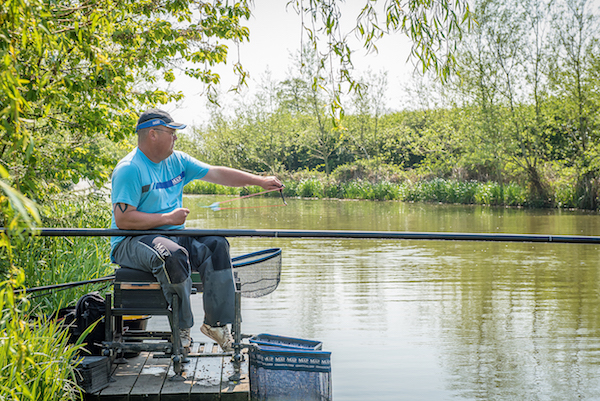
Note how Jamie keeps some pole behind him.
The massive change that I have recently noticed though, is the fish’s increased preference to hard pellet feed and hook baits. My theory is that they have been fished for so often with the standard soft pellet approach that the fish have simply wised up to it! Also when you think about it, as we almost never feed any expanders due to their light makeup they are only used as a hook bait, this means that every time a fish eats an expander, it gets caught!
You can quickly see why they would start to avoid soft pellets! Because of this change my approach to pellet fishing has had to change dramatically and for this feature I would like to focus on possibly the most popular method of fishing hard pellets that is known as pinging.
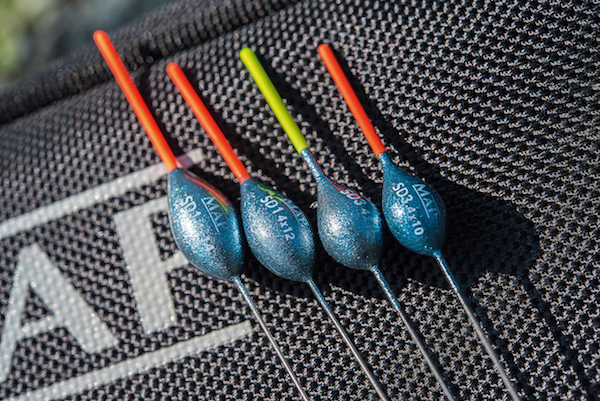
Stability, strength and visibility are three key features of a pinging float
Pinging, simply involves feeding hard pellets generally little and often by catapult into an area of the peg. Noise created by the baits landing on the surface is brilliant for attracting loads of carp and the steady stream of pellets creates competition between them.
Of course it sounds pretty simple, but there are several key aspects that have to be considered in order to make this method work correctly.

Light, balanced tackle is a must in Jamie's book.
PELLETS
The first thing I would like to focus on is the actual pellets that need to be used. How your pellets are behaving when in the water is possibly the most important factor in hard pellet fishing. The last thing that you want is to feed a pellet that breaks down or softens before even reaching the bottom of the lake.
Despite what many people think, there are really just 2 of types of pellet available to anglers, these are the standard coarse pellet, sold by most bait companies and secondly a much denser pellet produced by Coppens. These pellets are all pretty similar, with the only difference being the fishmeal
and oil content which varies with each batch of pellets.
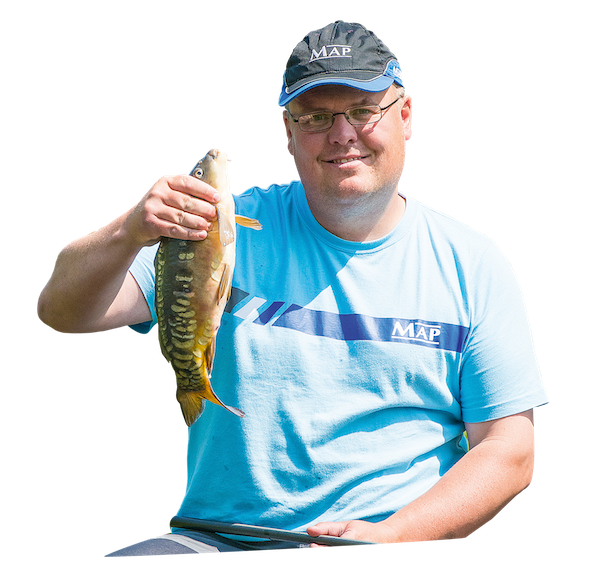
Carp of this size are suckers for pinging
Firstly the Coppens pellets. As I mentioned these are a much denser and often heavier pellet, which are perfect for helping to keep fish on the bottom, their dense makeup also means that they take a long time to break down. The downside of these pellets is that generally they sink quickly, making them not ideal for shallow fishing.
On the other hand, coarse pellets such as Bag‘ems Super Naturals are a far more versatile bait for use with this method, they are also the baits sold as fishery pellets at many venues across the country. These baits are much lighter than the Coppens variety, which results in a slower fall through the water, they also have a much quicker breakdown rate, although this can be slowed down with a small amount of pellet oil.
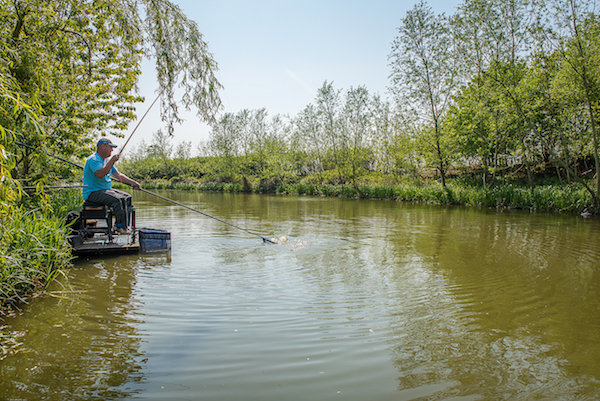
Even big fish can be landed on balanced tackle, as long as you take your time.
The reason I am so interested in the way my pellets behave in the water is because by understanding what state my pellets are in after a certain amount of time, I can regulate my feeding to prevent too much bait being fed and eventually pellets breaking down in my peg before being eaten.
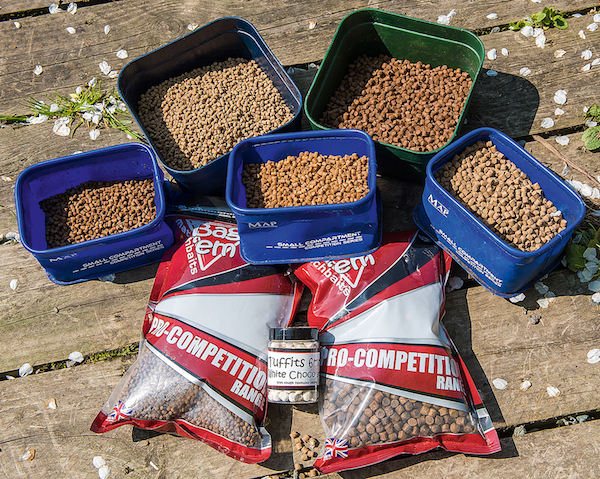
The slower a pellet breaks down the better it is for fishing on the bottom
Broken down pellets will only cause problems such as gill feeding or small-fish trouble. My ultimate aim is to always be presenting my hard pellet hook bait among other hard pellets, this gives the fish minimal options and gets me more bites.
Feeding
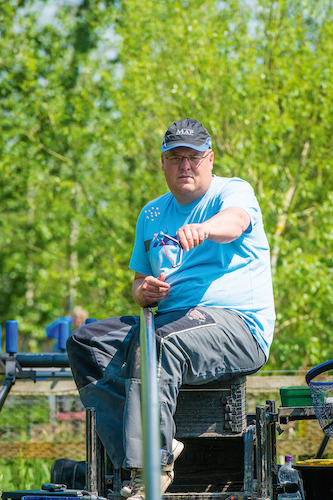
Try several catapults to find the one with which you can be most accurate with
My thoughts on feeding are that basically you have two aims. Firstly attracting fish into the peg is vital, this is best done by catapulting 3 to 5 pellets every minute or so, this creates a lot of noise on the surface but also offers the fish few options which in turn should create competition for the pellets, without over feeding. Your second aim is to get the fish
feeding where they are easiest to catch, by this I mean either shallow, through the water or on the bottom. By changing the amounts of pellets and the regularity that they are fed, it is easy to quickly establish where in the peg the fish are happiest.
Let me explain... As I mentioned, by pinging regular small amounts of pellets, a lot of competition is created between the fish, what it also causes is the fish to rise up in the water column to intercept the bait, this can be great in hot weather or when the fish are happy to feed shallow, but on the other hand if there’s not a huge amount of fish in the swim, then line bites and foul-hookers can quickly become a problem.
For this reason in the early part of a session, I like to play safe and catch as many fish on the bottom as possible, before pushing the peg and hopefully catching shallow in the later stages. In order to achieve this more bait has to be fed less regularly.
I often find that by feeding 20 to 30 pellets immediately after hooking a fish, it can really settle the peg down, as by the time you have played the fish, rebaited and shipped out, everything in the peg has settled on the bottom causing less missed bites.
Of course there is rarely a feeding pattern that will work for the duration of the match, but hopefully by altering things depending on what is being shown on my float, I am able to keep in touch with the feeding moods and put a few more fish in the net by reacting quicker than everyone else.
Rigs
As with all my fishing, the rigs for pinging pellets are kept as simple as possible.
As a rule two rigs will cover most situations when the fish are feeding on the bottom, of course I will also have shallow rigs set up, but I'm going to cover that in the next feature in a lot more depth.
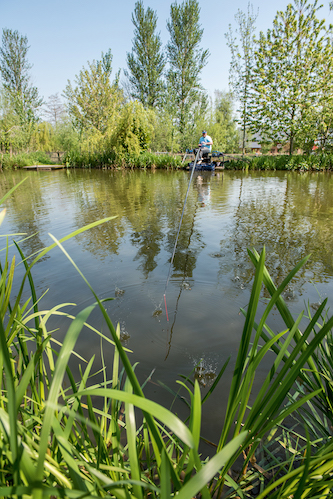
Carp and F1s almost always home in on the noise of pellets hitting water
My two rigs for fishing on the bottom work in different ways, firstly I have a rig to fish all the way through the water column. This is a light 4x12 carbon-stem float (in four to six feet) shotted with spread No11 shot through the entire rig. I use this as my starter rig as it tells me exactly how the fish are feeding in the peg.
When pinging I expect the fish to behave in three different ways, depending on my feeding;
Firstly by continuing the little and often feeding, I would expect to get bites just after the rig has settled as the fish follow the hook bait to the deck, if this happens then my time is best spent on a slow falling rig.
Alternatively, if I am getting very few indications and waiting in excess of a couple of minutes for a bite, then my time is best spent on my second rig which is a 4x14 wire-stem float, shotted with a bulk of No9s and two No11 droppers. This rig will settle around 8 seconds faster than the light rig, which may sound like nothing, but if I lay this rig in a hundred times then I gain almost fourteen minutes of fishing!
The third occurrence that I would expect to happen would be to miss several bites in quick succession while using either rig. This tells me that the amount of fish present in the peg has increased which has forced them to rise off the bottom, competing to get to the feed first. A quick try with a shallow rig should usually confirm this, but if that fails then as mentioned before, larger amounts of feed less regularly should push them back to the bottom.
The last factor that I feel needs thought putting into when pinging, is the makeup of the lake bottom where you choose to fish. It is extremely difficult to fish this method over thick, silty bottoms, as the fish tend to root around for the hidden pellets causing lots of bubbles and very few bites, I would try to combat this with minimal feed but as a rule you are wasting your time trying to fish pellets on the bottom in these circumstances.
My ideal peg would be a nice gravel or sloping bottom where any silt is unable to settle, this creates a clean peg where all the baits can be seen by the fish, resulting in positive bites.
Hopefully my theories have shown that by putting a little more thought into your approach when pinging, there are a lot of little improvements that can be made. It has certainly changed the way I view my pellet fishing.
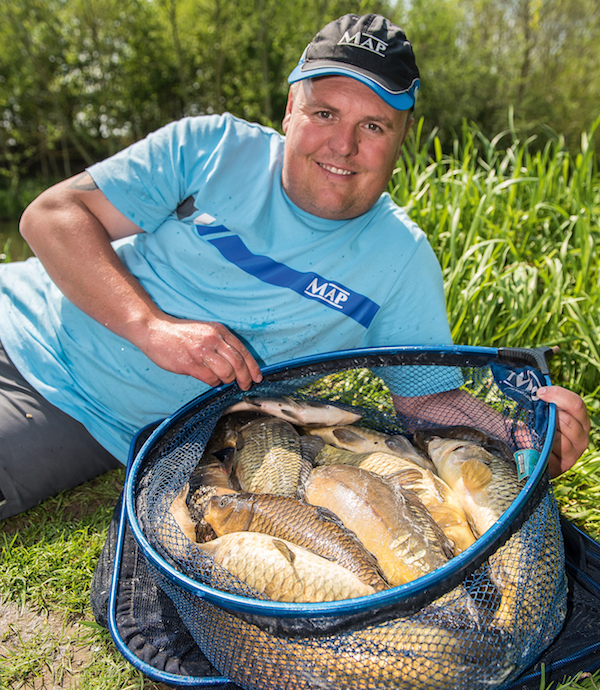
Just one of many big commercial hauls that Jamie has nailed on his pinging tactics
Angler File:
Jamie Hughes
Age: 33
Lives: Wirral
Sponsors: MAP & Bag‘em Matchbaits
- Log in or register to post comments










